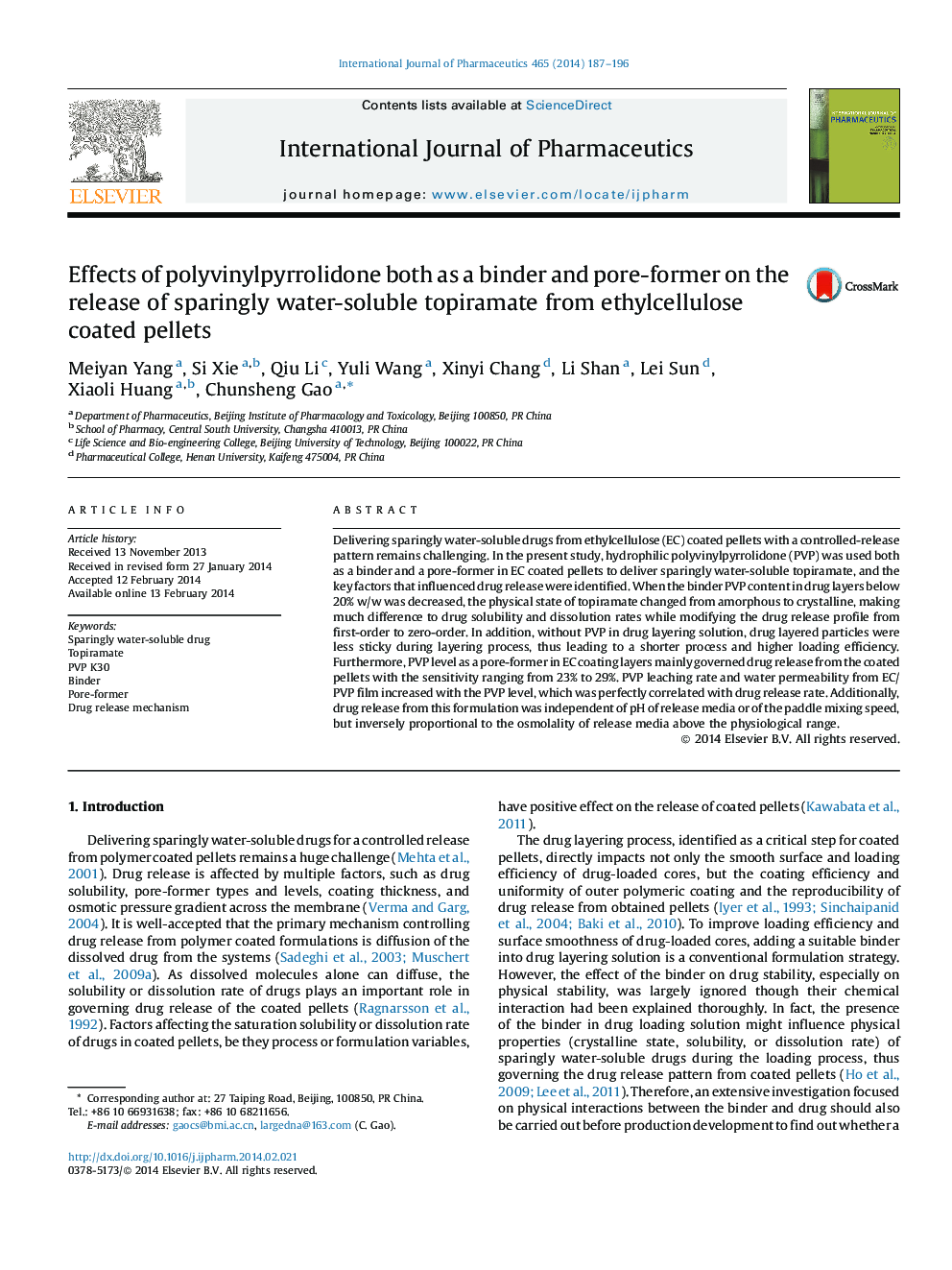| Article ID | Journal | Published Year | Pages | File Type |
|---|---|---|---|---|
| 5819652 | International Journal of Pharmaceutics | 2014 | 10 Pages |
Abstract
Delivering sparingly water-soluble drugs from ethylcellulose (EC) coated pellets with a controlled-release pattern remains challenging. In the present study, hydrophilic polyvinylpyrrolidone (PVP) was used both as a binder and a pore-former in EC coated pellets to deliver sparingly water-soluble topiramate, and the key factors that influenced drug release were identified. When the binder PVP content in drug layers below 20% w/w was decreased, the physical state of topiramate changed from amorphous to crystalline, making much difference to drug solubility and dissolution rates while modifying the drug release profile from first-order to zero-order. In addition, without PVP in drug layering solution, drug layered particles were less sticky during layering process, thus leading to a shorter process and higher loading efficiency. Furthermore, PVP level as a pore-former in EC coating layers mainly governed drug release from the coated pellets with the sensitivity ranging from 23% to 29%. PVP leaching rate and water permeability from EC/PVP film increased with the PVP level, which was perfectly correlated with drug release rate. Additionally, drug release from this formulation was independent of pH of release media or of the paddle mixing speed, but inversely proportional to the osmolality of release media above the physiological range.
Related Topics
Health Sciences
Pharmacology, Toxicology and Pharmaceutical Science
Pharmaceutical Science
Authors
Meiyan Yang, Si Xie, Qiu Li, Yuli Wang, Xinyi Chang, Li Shan, Lei Sun, Xiaoli Huang, Chunsheng Gao,
